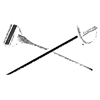Business Casual Attire: A Complete Guide for Men in 2025

Welcome to the world of “business casual”, a term that often leaves men scratching their heads in confusion. This thorough guide aims to help you understand exactly what business casual entails, how to curate a compelling wardrobe, and navigate this specific dress code in your workplace. In doing so, we’ll make your style both accessible and exciting.
What is Business Casual?
The Essence of Business Casual
The term “business casual” is a dress code that involves wearing professional, yet comfortable attire. Men’s business casual often includes items such as button-down shirts, polo shirts, dress pants or chinos, loafers, and at times, a blazer or sweater.
Business Casual vs. Business Formal
Distinguishing between business casual and business formal can be tricky. Business formal attire for men generally means a suit and tie, often coupled with dress shoes. On the other side of business casual, however, you’ll find more relaxed items such as a dress shirt without a tie, dark jeans, or closed-toe shoes.
Why Understanding Business Casual Matters
Deciphering the business casual dress code is crucial for any man navigating the current workplace. This understanding allows you to dress appropriately, balancing professionalism with comfort and personal style. In turn, this can impact your confidence, performance, and overall impression at work.
Key Elements of Business Casual for Men
Attire Essentials for Business Casual
Key elements in a business casual outfit include pieces like a dress shirt, chinos, polished leather shoes, and a good-quality belt. During cooler months, a sweater can enhance your casual look. Don’t forget the importance of a well-fitted blazer in your business casual wardrobe, as it can elevate any outfit to the perfect business casual style.
Blazers and Sweaters: Staple Pieces in Business Casual
Blazers and sweaters are key elements in men’s business casual attire. Whether you wear a blazer over a polo shirt or a sweater over a button-down shirt, these items can add a professional touch to your casual wear. Remember, the aim is to look relaxed yet sharp.
Business Casual Shoes: How to Choose Right
Your choice of shoes can make or break your business casual look. Opt for loafers, dress shoes, or brogues that complement your outfit. Also, ensure they are polished and in good condition. Closed-toe shoes are an ideal addition to any business casual outfit, combining style with professionalism.
How to Dress Business Casual?
Picking the Right Business Casual Outfit
To master your business casual dress, keep variety in mind but ensure that your outfits are consistently polished and professional. Balance your attire by pairing casual items with more formal pieces. For example, you might pair a polo with dress pants or wear jeans with a crisp button-down shirt and blazer.
Office-Friendly Denim : Yay or Nay?
The question of denim in the business casual spectrum often arises. The key is to opt for dark jeans, which tend to look more professional than their lighter counterparts. However, it’s essential to determine whether denim is acceptable in your specific workplace before including it in your business casual ensemble.
Suit Up: Casual Suits in Business Attire
Casual suits can also fall into the business casual category, especially if paired down with a casual shirt or polo. This allows you to retain an air of professionalism while incorporating elements of your personal style.
Examples of Business Casual
Solving The Business Casual Dress Code Puzzle: Real-Life Examples
Real-life examples of business casual may include attire such as a pair of tailored chinos, a crisp white button-down shirt, loafers, and a blazer for meetings. Alternatively, a polo shirt, dark jeans, and leather shoes can also constitute a business casual outfit for a more relaxed office environment.
Transitioning From Business Casual for Women to Men: Key Differences
While the principles remain the same, there are key differences in business casual for women and men. Men’s outfits tend to be straightforward, often involving trousers, a shirt, and suitable footwear. However, women can choose from a broader array of options, including blouses, skirts, blazers, dresses, and more.
Seasonal Variations in Business Casual
Climate changes influence business casual attire. Sweaters, blazers, and heavier trousers are suitable for colder months, while lighter fabrics, polo shirts, and chinos are perfect during warmer climates. Regardless of the season, it’s important to adhere to the business casual dress code at your workplace.
Dressing for Success: Transforming Business Attire to Personal Style
Smart Casual: The Modern Business Casual
Smart casual is the modern evolution of business casual, leaning towards more contemporary trends. This may involve trendy items such as high-quality sneakers, unique accessory pieces, or even premium denim paired with a tailored blazer. It’s a subtle balance of business and casual, making it a prevalent choice among younger professionals.
Dress Codes in Modern Workplace: Navigating the Looks
As workplace norms evolve, so do dress codes. Modern professionals need to understand and adapt to these changes. On a casual Friday, for example, one might lean more towards the casual side while maintaining a professional look. Adapting to business casual style effectively will make you look polished and appropriate.
Err on the Side of Formality: When to Lean Towards Business Formal
In situations where you are uncertain, it’s best to err on the side of formality and lean more towards business formal. It is far better to be slightly overdressed than underdressed. This means, when in doubt, ditch the denim and opt for dress pants instead, and consider adding a blazer to ensure you appear professional.

You might like these!



